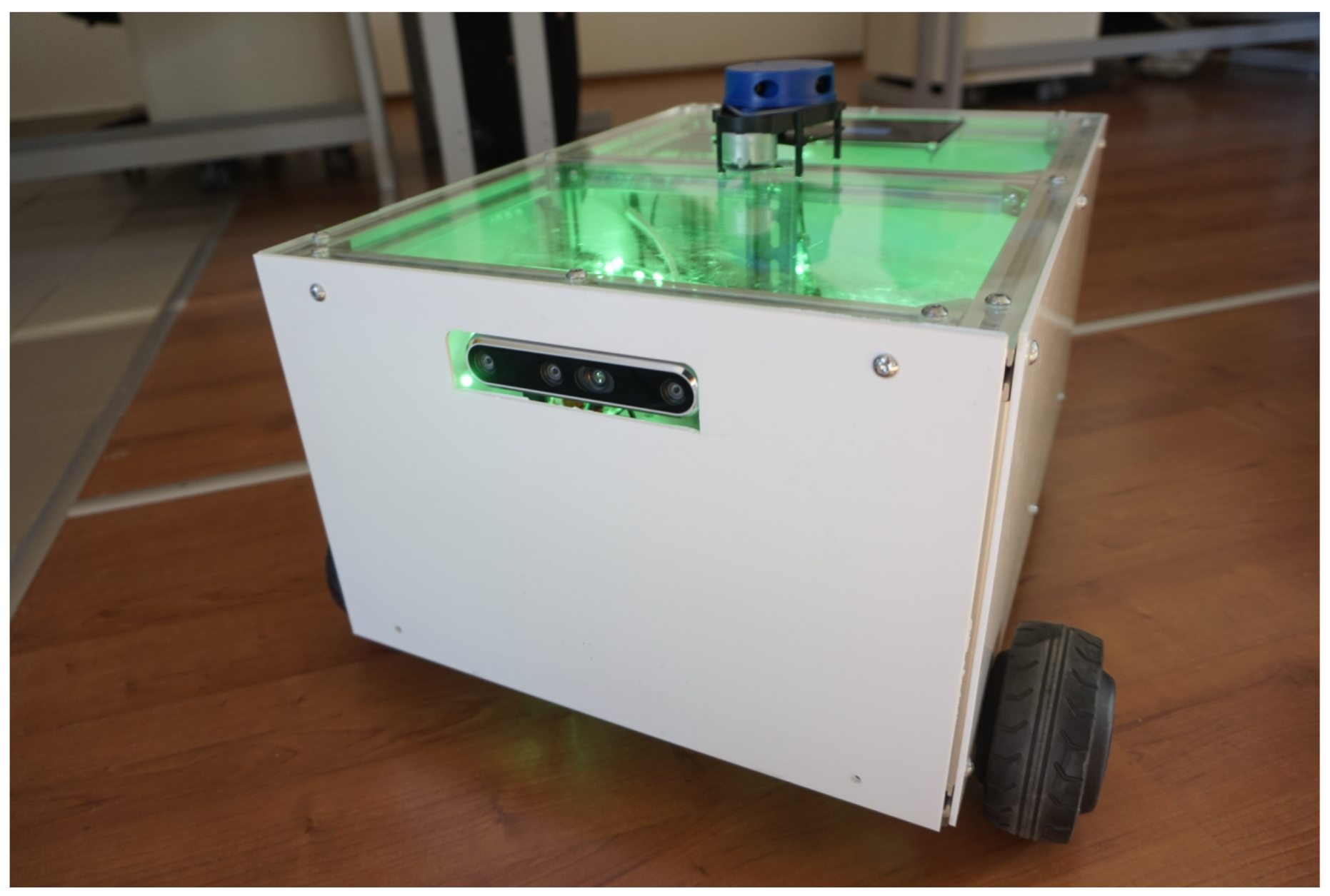Projects
Challenge levels and grades
Projects can be completed at three Challenge levels. The Challenge level determines the best grade that can be received to the project!
| Challenge level | Best grade |
|---|---|
| Basic | 3 |
| Advanced | 4 |
| Epic | 5 |
Tip
The projects are defined in a way that it is recommended to tart with the Basic level, and then gradually work towards Epic.
The projects are graded based on the follwoing aspects:
- Proved to be the student's own work
- Running results valid output
- Usage of versioning, usage of GitHub/GitLab/other repository
- Grading:
- completeness of the soultion
- proper ROS communication
- proper structure of the program
- quality of implementation
- documentation quality
Grading
Personal attendance on the classes is mandatory (min 70%).
To pass the course, Tests and the Project must be passed (grade 2). One of the Test can be taken again.
Grade
\(Jegy = (Test1 + Test2 + 2 \times Project) / 4\)
Project topics
1. Mobil robot
A. Playground Robot

B. TurtleBot4

C. PlatypOUs (ROS 1)

D. Any mobile robot
1.1. Mobile robot obstacle avoidance
- Basic: SSimulator setup, testing SLAM. Implementation of ROS node(s) to read the sensor data and move the robot.
- Advanced: Implementation of a ROS system to detect obstacle. Calculation and execution of a trajectory avoiding the obstacle in the simulator, using any sensor of the robot.
- Epic: Implementation and testing on the real robot/impress me!
1.2. Mobile robot path following
- Basic: Simulator setup. Implementation of ROS node(s) to read the sensor data and move the robot.
- Advanced: Implementation of a ROS system for path follwoing in the simulator, using any sensor of the robot (e.g., driving next to the wall with given distance using LIDAR).
- Epic: Implementation and testing on the real robot/impress me!
1.3. Mobile robot object follwoing
- Basic: Simulator setup. Implementation of ROS node(s) to read the sensor data and move the robot.
- Advanced: Implementation of a ROS system to detect an object and follow it in the simulator, using any sensor of the robot(e.g., visual servoing).
- Epic: Implementation and testing on the real robot/impress me!
1.4. Mobile robot action library
- Basic: Simulator setup. Implementation of ROS node(s) to read the sensor data and move the robot.
- Advanced: Implementation of a ROS action library containing simple actions and their execution (e.g., push object, move to object, turn around).
- Epic: Implementation and testing on the real robot/impress me!
2. Quadcopter
- Gazebo install
-
Setting up a robot simulation (Gazebo)
ign gazebo -v 4 -r quadcopter.sdf

- Basic: Simulator setup. Implementation of ROS node(s) to read the sensor data and move the robot.
- Advanced: ROS system implementation to control velocity/position.
- Epic: Impress me!
3. Any Gazebo simulaion

Based on discussion.
4. Gazebo simulation creation

Based on discussion.
5. TurtleSim

5.1 Turtlesim Fraktál/Szöveg
- Basic: Implement a proportianl controller.
- Advanced: Draw fractal/text.
- Epic: Impress me!
6. DVRK

6.1 DVRK Interactive Marker
Graspable, movable marker for the DVRK simulator.
7. YouBot (Windows)
7.1. YouBot ROS integration
- Basic: YouBot repo build.
- Advanced: ROS wrapper/interface implementation, move the simulated arm in joint space from ROS.
- Epic: Implementation and testing on the real robot/impress me!
X. Custom topic
Based on discussion.